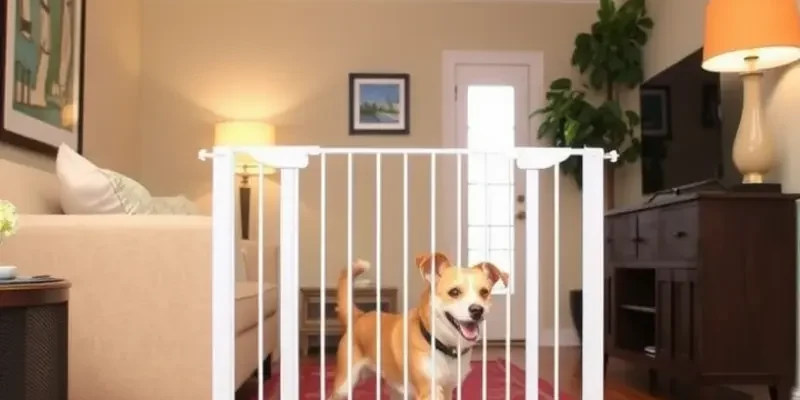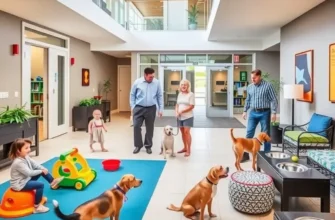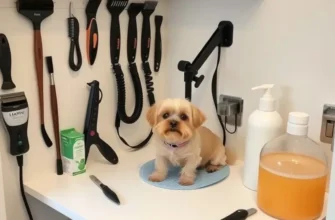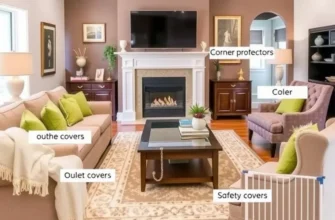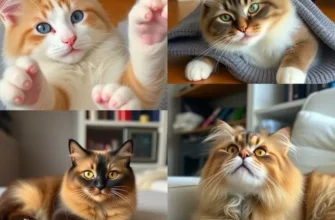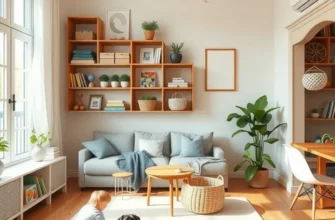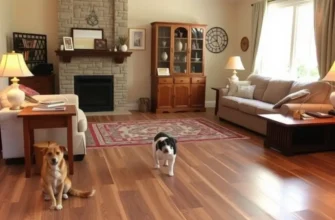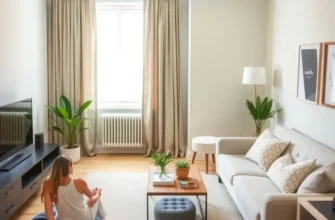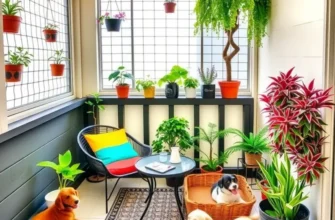Finding the right apartment that can accommodate both pets and children is a challenge many families face, especially in bustling cities. As couples and individuals seeking comfortable living situations, understanding how to create a pet-friendly environment is essential. This guide offers creative containment strategies for renters looking to keep their furry friends safe while ensuring their homes remain welcoming and livable. With thoughtful planning, shared spaces can become safe havens for pets and children alike, striking that perfect balance between functionality and fun. From utilizing clever barriers to incorporating engaging activities for pets, these ideas will help families find solutions tailored to their unique apartment living situations.
Creative Barriers: Practical Solutions to Keep Pets Safe
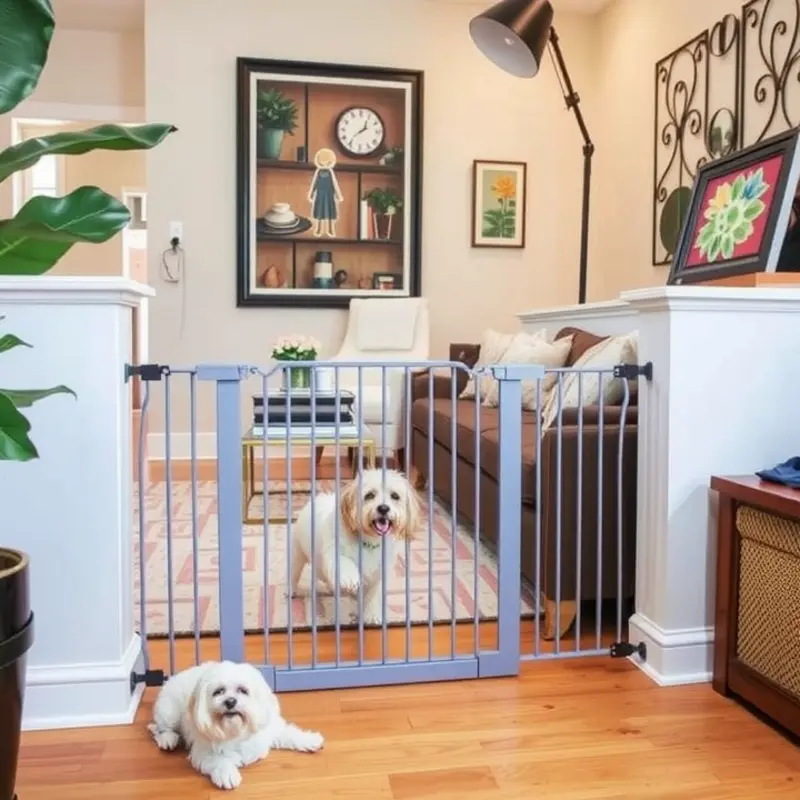
Navigating the challenge of securing your pet’s safety within a small apartment can be daunting. However, implementing creative barriers and gates can help create a haven without compromising your living area. When considering barriers, it’s essential to first assess the unique needs of your pet and space.
Types of barriers range from adjustable gates to freestanding fences. Adjustable gates are ideal for blocking off doorways or hallways, providing flexibility as your needs change. Freestanding fences offer the advantage of portability, easily moved around the apartment to restrict access to specific areas like the kitchen or workspaces. If you’re concerned about aesthetics, many modern gates come in sleek designs and colors that blend seamlessly with your decor.
For a more customized solution, consider DIY barriers. Crafting your barrier allows you to tailor it to your space’s dimensions and style. A simple DIY project might involve using lightweight wood or PVC pipes to construct a low barrier, perfect for smaller pets. Adding a fabric cover can soften the look and integrate it with your room’s color palette.
To choose the ideal barriers for your apartment, weigh the options based on size, decor, and functionality. Taking accurate measurements of the areas you wish to secure is crucial. Ensure any purchased or handmade barrier is robust enough to withstand your pet’s attempts to overcome it. The height of a barrier should match your pet’s ability to jump or climb. Remember, a barrier too short can defeat its purpose.
Effortless integration into your decor involves more than color; consider the materials and style. Opt for materials that resonate with the existing textures in your home. Natural wood can offer a warm, rustic touch, while metal may lend a modern edge. For those more attuned to minimalist aesthetics, consider transparent barriers made from acrylic, providing functionality without visual clutter.
Ultimately, the goal is to create a safe environment that respects the coexistence of pets and your lifestyle. By employing these creative barrier solutions, you’ll establish an apartment where pets thrive. For additional pet-friendly living tips, explore our guide on apartment pet vaccination to complement your containment strategies.
Engaging Activities: Keeping Pets Entertained and Contained
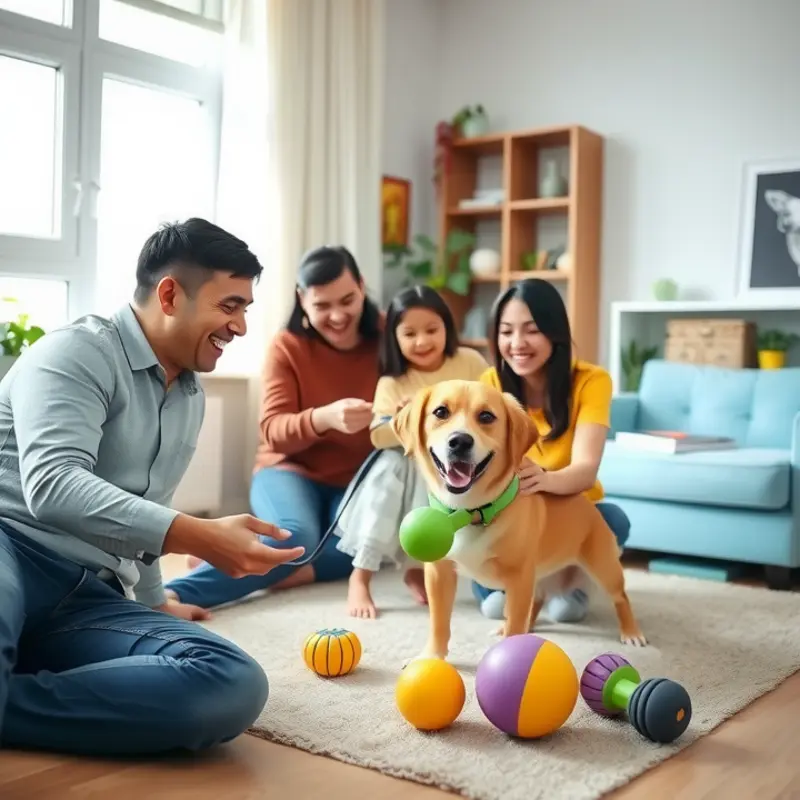
Apartment living doesn’t have to limit pet activities. With creativity, small spaces can become vibrant playgrounds for pets. Here, we explore various approaches to engage pets, ensuring they remain both entertained and safely contained.
Toys that Stimulate Minds and Bodies
Opt for toys that cater to your pet’s natural instincts. For dogs, interactive puzzles and chew toys provide mental stimulation. Cats often enjoy toys like feather wands or balls that mimic prey. Choose toys made from durable materials to avoid the risk of breaking and causing a hazard.
Interactive Games to Keep Pets Engaged
Playing games is a great way to bond with your pet while keeping them active. Try indoor fetch with a soft ball that won’t damage the apartment. Hide-and-seek is another excellent option. Hide treats or toys around your space and let your pet’s natural hunting instincts take over.
Creative Use of Space for Playtime
Dedicate a corner of your living room to a mini pet playground. Utilize vertical spaces with shelves for climbing or perching for cats — ensure they are secured well to avoid any accidents. You can also rearrange furniture to create tunnels or paths. This adds interest and variation without taking up extra room. For more inspiration and safety tips on installing shelf alternatives, consider this guide.
The Importance of Routine
Establishing a playtime routine helps manage both your pet’s behavior and energy levels. Scheduled activities at specific times of the day also create anticipation, keeping pets happily occupied. Morning and evening are ideal times for longer play sessions, while shorter, more frequent ones work during busy hours.
Creating Safe Boundaries
It’s crucial to define pet-exclusive zones. Panels or barriers can help section off areas to ensure they don’t wander into places that might be unsafe. Also, consider using baby gates to cordon off certain areas easily.
DIY Projects for Fun and Function
There are plenty of DIY projects you can tackle to create customized play areas. Consider making a textured rug or play mat for sensory play. You can also craft a window perch where pets can safely watch outdoor scenes. These projects not only cater to your pet’s curiosity but also ensure containment within secure zones.
By integrating these ideas into your apartment, you enhance your pet’s living environment. These efforts contribute to an enriched, safe space, ensuring that both pets and their families enjoy urban living without compromise.
Final words
By implementing these apartment-friendly pet containment ideas, families can create safe and engaging environments for their beloved pets while keeping their homes organized and stylish. Remember, the key is to strike a balance—between safety, playfulness, and aesthetics to make both children and pets feel welcome and secure in their shared space. With the right strategies, your apartment can be a thriving hub of love and joy for all its inhabitants.

